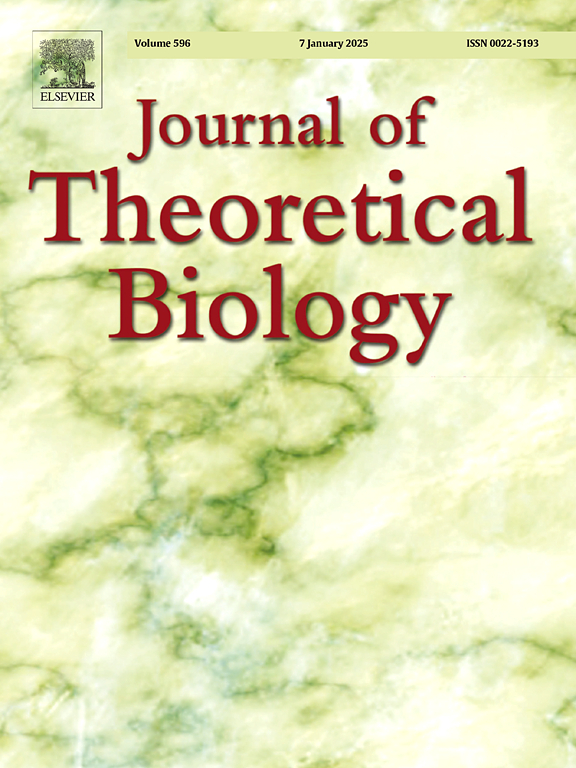人造血网络中不同SARS-CoV-2刺突蛋白感染点的网络建模
IF 2
4区 数学
Q2 BIOLOGY
引用次数: 0
摘要
造血是一个生理过程,其主要功能是形成和补充不同类型的血细胞。据报道,SARS-CoV-2会在多个感染点影响人体造血系统,导致多种类型的血液疾病。然而,造血系统中不同的SARS-CoV-2感染点可能产生的影响从未完全了解。在这项研究中,我们设计并生成了多个人类造血网络模型,代表了人类造血系统中不同的已知SARS-CoV-2感染点。随后,进行中心性测量分析,以识别模型中的重要节点和边缘。我们假设生成了人类造血网络模型,以代表人类造血系统中不同的、协同的和综合的SARS-CoV-2刺突蛋白感染点。此外,我们潜在地确定,无论是离散网络模型还是协同网络模型都没有显示出人类造血网络的任何变化,我们将其归因于造血系统的保守性。此外,我们推测,综合网络模型表明红细胞生成和血小板生成主要受到影响。总的来说,我们提出,在涉及刺突蛋白的SARS-CoV-2感染存在的情况下,综合网络模型推定是人类造血系统更准确的代表。本文章由计算机程序翻译,如有差异,请以英文原文为准。
Network modeling of the different SARS-CoV-2 spike protein infection points within the human hematopoietic network
Hematopoiesis is a physiological process that mainly functions in both the formation and replenishment of varying types of blood cells. SARS-CoV-2 has been reported to affect the human hematopoietic system at multiple infection points leading to multiple types of blood disorders. However, the possible effects of the different SARS-CoV-2 infection points within the hematopoietic system were never fully understood. In this study, we designed and generated multiple human hematopoietic network models representing the varying known SARS-CoV-2 infection points within the human hematopoietic system. Subsequently, centrality measurement analyses were performed to identify significant nodes and edges within the models. We putatively generated human hematopoietic network models to represent the distinct, synergistic, and integrated SARS-CoV-2 spike protein infection points within the human hematopoietic system. Additionally, we potentially established that neither the discrete nor the synergistic network models showed any changes in the human hematopoietic network, which we attributed to the conserved nature of the hematopoietic system. Furthermore, we presumably demonstrated that the integrated network model indicated that erythropoiesis and thrombopoiesis were primarily affected. Overall, we propose that an integrated network model is putatively the more accurate representation of the human hematopoietic system in the presence of SARS-CoV-2 infection involving the spike protein.
求助全文
通过发布文献求助,成功后即可免费获取论文全文。
去求助
来源期刊
CiteScore
4.20
自引率
5.00%
发文量
218
审稿时长
51 days
期刊介绍:
The Journal of Theoretical Biology is the leading forum for theoretical perspectives that give insight into biological processes. It covers a very wide range of topics and is of interest to biologists in many areas of research, including:
• Brain and Neuroscience
• Cancer Growth and Treatment
• Cell Biology
• Developmental Biology
• Ecology
• Evolution
• Immunology,
• Infectious and non-infectious Diseases,
• Mathematical, Computational, Biophysical and Statistical Modeling
• Microbiology, Molecular Biology, and Biochemistry
• Networks and Complex Systems
• Physiology
• Pharmacodynamics
• Animal Behavior and Game Theory
Acceptable papers are those that bear significant importance on the biology per se being presented, and not on the mathematical analysis. Papers that include some data or experimental material bearing on theory will be considered, including those that contain comparative study, statistical data analysis, mathematical proof, computer simulations, experiments, field observations, or even philosophical arguments, which are all methods to support or reject theoretical ideas. However, there should be a concerted effort to make papers intelligible to biologists in the chosen field.

 求助内容:
求助内容: 应助结果提醒方式:
应助结果提醒方式:


